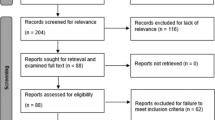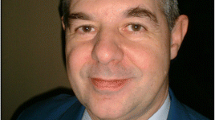Abstract
Purpose
To assess the postoperative appearance of the trunk in surgically treated scoliosis patients after a 2 year follow-up using reliable indices and compare the results with 6-month follow-up.
Methods
Forty-six Adolescent Idiopathic Scoliosis (AIS) patients (female; preop mean age 14.4 ± 2.4 years) who underwent a posterior spinal fusion from 2009 to 2018 were included in this study. All had Lenke 1A thoracic curves, with surface topography taken preoperatively, 6 months and 2 years postoperatively. To assess spinal deformity, we measured the proximal thoracic, main thoracic and thoracolumbar/lumbar Cobb angles in the frontal plane from spinal X-rays and inclinometer angles in the thoracic and lumbar regions. To assess trunk deformity, Back Surface Rotation (BSR) and Trunk Lateral Shift (TLS) were computed along the trunk. We analysed the effect of age, height, weight, Cobb angle, length of follow-up, and surgical technique. We also compared correction rates (CRs) of the spinal and trunk measurements after 6 months and 2 years.
Results
Good spinal correction was achieved, with Cobb angles decreasing in the whole cohort. CRs for TLS and BSR were positive (denoting improvement) for 76% and 48% of patients, respectively, after 2 years. Compared with 6 months, the mean TLS CR increased while there was no improvement for BSR on average. We found no significant association after 2 years between truncal index CRs and clinical variables (age, height, weight, preoperative Cobb angles) or surgical technique. However, there were significant correlations between the CRs of TLS and the main thoracic Cobb angle (r = 0.35), and between the CRs of BSR and thoracic inclinometer angle.
Conclusion
Although more than 55% of the TLS was corrected after 2 years of follow-up, the BSR remained stable over time and the persistence of rib hump on the back surface could be observed.
Level of evidence
III.




Similar content being viewed by others
References
Seoud L, Cheriet F, Labelle H, Parent S (2015) Changes in trunk appearance after scoliosis spinal surgery and their relation to changes in spinal measurements. Spine Deformity 3:595–603. https://doi.org/10.1016/j.jspd.2015.05.001
Martha H (2006) Impact of spine surgery on signs and symptoms of spinal deformity. Pediatric Rehabil 9:318–339
Tones M, Moss N, Polly DW Jr (2006) A review of quality of life and psychosocial issues in scoliosis. Spine 31:3027–3038. https://doi.org/10.1097/01.brs.0000249555.87601.fc
Pratt RK, Burwell RG, Cole AA, Webb JK (2002) Patient and parental perception of adolescent idiopathic scoliosis before and after surgery in comparison with surface and radiographic measurements. Spine 27:1543–1550. https://doi.org/10.1097/00007632-200207150-00012
Patias P, Grivas TB, Kaspiris A, Aggouris C, Drakoutos E (2010) A review of the trunk surface metrics used as scoliosis and other deformities evaluation indices. Scoliosis. https://doi.org/10.1186/1748-7161-5-12
Stokes IA, Armstrong JG (1988) Spinal deformity and back surface asymmetry in idiopathic scoliosis. J Orthop Res 6:129–137. https://doi.org/10.1002/jor.1100060117
Jaremko JL, Poncet P, Ronsky J et al (2002) Indices of torso asymmetry related to spinal deformity in scoliosis. Clin Biomech 17:559–568. https://doi.org/10.1016/s0268-0033(02)00099-2
Ajemba PO, Durdle N, Raso VJ (2009) Characterizing torso shape deformity in scoliosis using structured splines models. IEEE Trans Biomed Eng 56:1652–1662. https://doi.org/10.1109/TBME.2009.2020333
Seoud L, Dansereau J, Labelle H, Cheriet F (2012) Multilevel analysis of trunk surface measurements for non-invasive assessment of scoliosis deformities. Spine 37:1045–1053. https://doi.org/10.1097/BRS.0b013e3182575938
Lonner BS, Castillo A, Kassin G, Ren Y (2020) Surface topography assessment of body shape after surgical correction in adolescent idiopathic scoliosis. Spine Deformity 8:213–220. https://doi.org/10.1007/s43390-020-00041-4
Benli IT, Ates B, Akalin S, Citak M, Kaya A, Alanay A (2007) Minimum 10 years follow-up surgical results of adolescent idiopathic scoliosis patients treated with TSRH instrumentation. Eur Spine J 16:381–391. https://doi.org/10.1007/s00586-006-0147-3
Pazos V, Cheriet F, Song L et al (2005) Accuracy assessment of human trunk surface 3D reconstructions from an optical digitising system. Med Biol Eng Comput 43:11–15. https://doi.org/10.1007/BF02345117
Stokes IA (1994) Three-dimensional terminology of spinal deformity. A report presented to the Scoliosis Research Society by the Scoliosis Research Society Working Group on 3-D terminology of spinal deformity. Spine 19:236–248
Pratt RK, Webb JK, Burwell RG, Cole AA (2001) Changes in surface and radiographic deformity after Universal Spine System for right thoracic adolescent idiopathic scoliosis: is rib-hump reassertion a mechanical problem of the thoracic cage rather than an effect of relative anterior spinal overgrowth? Spine Br 26:1778–1787. https://doi.org/10.1097/00007632-200108150-00009
Newton PO, Marks MC, Bastrom TP et al (2013) Surgical treatment of Lenke 1 main thoracic idiopathic scoliosis: results of a prospective, multicentre study. Spine 38:328–338. https://doi.org/10.1097/BRS.0b013e31826c6df4
Jaremko JL, Poncet P, Ronsky J et al (2001) Estimation of spinal deformity in scoliosis from torso surface cross sections. Spine 26:1583–1591. https://doi.org/10.1097/00007632-200107150-00017
Minguez M, Buendia M, Cibrian R et al (2007) Quantifier variables of the back surface deformity obtained with a noninvasive structured light method: evaluation of their usefulness in idiopathic scoliosis diagnosis. Eur Spine J 16:73–82. https://doi.org/10.1007/s00586-006-0079-y
Suzuki N, Inami K, Ono T et al (1999) Analysis of posterior trunk symmetry index (potsi) in scoliosis. Stud Health Technol Inform. https://doi.org/10.3233/978-1-60750-903-5-81
Pazos V, Cheriet F, Danserau J et al (2007) Reliability of trunk shape measurements based on 3-D surface reconstructions. Eur Spine J 16:1882–1891. https://doi.org/10.1007/s00586-007-0457-0
Weatherley CR, Draycott V, Obrien JF et al (1987) The rib deformity in adolescent idiopathic scoliosis. A prospective study to evaluate changes after Harrington distraction and posterior fusion. J Bone Joint Surg Br 69:179–182. https://doi.org/10.1302/0301-620X.69B2.3818745
Acknowledgements
The authors thank the personnel of the Orthopaedics Research Clinical Unit (URCO, CHU Sainte-Justine) for their help with collecting clinical data. The authors have no competing interests to declare that are relevant to the content of this article.
Funding
This work was funded by the Canadian Institutes of Health Research (CIHR) and the TransMedTech Institute.
Author information
Authors and Affiliations
Contributions
MK, FC, LS, SP, HL: Study Design; MK, FC, LS: Methodology; MK, PD, SP, HL: Data collection; MK, FC, LS, PD, SP, HL: Analysis; MK, FC, LS, PD: Writing.
Corresponding authors
Ethics declarations
Conflict of interest
The authors have no competing interests to declare that are relevant to the content of this article.
Additional information
Publisher's Note
Springer Nature remains neutral with regard to jurisdictional claims in published maps and institutional affiliations.
Rights and permissions
Springer Nature or its licensor (e.g. a society or other partner) holds exclusive rights to this article under a publishing agreement with the author(s) or other rightsholder(s); author self-archiving of the accepted manuscript version of this article is solely governed by the terms of such publishing agreement and applicable law.
About this article
Cite this article
Khani, M., Cheriet, F., Seoud, L. et al. Changes in trunk appearance following surgical correction of adolescent idiopathic scoliosis. Spine Deform (2024). https://doi.org/10.1007/s43390-024-00843-w
Received:
Accepted:
Published:
DOI: https://doi.org/10.1007/s43390-024-00843-w




